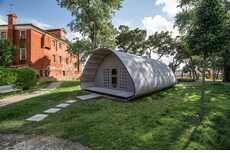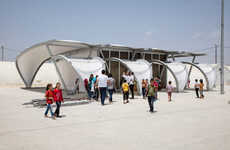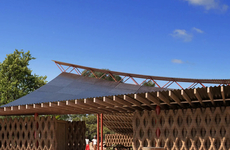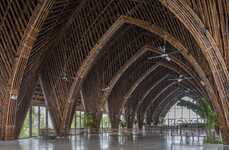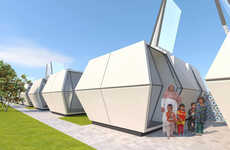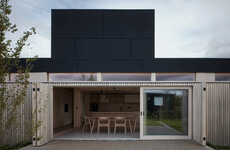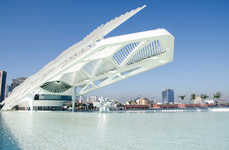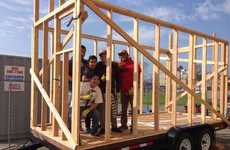
This Structure Provides Shelter for Orphaned Haitian Children
Mishal Omar — May 12, 2016 — Eco
References: dezeen
Located in Anse-a-Pitres -- a village that has a beautiful landscape but lacks running water and electricity -- this earthquake-resistant shelter provides a home for orphaned Haitian children.
Called Ti Kay La, the orphanage was designed by Italian architect Bonaventura Visconti di Modrone, who wanted the structure to allow the orphaned children to feel like they were "part of a family again." The architect was inspired by local Haitian architecture and sought the help of local workers to build the earthquake-resistant shelter. Employing local workers and using local materials was a purposeful move to help the support economy of the village.
The result is a bright, spacious structure that has an open concept, ensuring cool air circulation in Haiti's extremely hot climate. The shelter is also elevated above ground, and is ideal for avoiding the risk of floods.
Called Ti Kay La, the orphanage was designed by Italian architect Bonaventura Visconti di Modrone, who wanted the structure to allow the orphaned children to feel like they were "part of a family again." The architect was inspired by local Haitian architecture and sought the help of local workers to build the earthquake-resistant shelter. Employing local workers and using local materials was a purposeful move to help the support economy of the village.
The result is a bright, spacious structure that has an open concept, ensuring cool air circulation in Haiti's extremely hot climate. The shelter is also elevated above ground, and is ideal for avoiding the risk of floods.
Trend Themes
1. Earthquake-resistant Structures - Incorporating earthquake-resistant elements in buildings holds great potential for innovation in construction.
2. Localized Architecture - Taking inspiration from local architecture and utilizing local workers and materials offers opportunities for sustainable and community-driven architecture.
3. Climate-conscious Design - Designing structures that prioritize relief from extreme weather conditions showcases the potential for innovation in climate-conscious architecture.
Industry Implications
1. Construction - Incorporating earthquake-resistant elements in buildings can disrupt the traditional construction industry.
2. Architecture - Incorporating local inspiration offers disruptive innovation opportunities in the architecture industry.
3. Environmental Engineering - Developing structures that prioritize climate consciousness opens doors for innovation in environmental engineering.
2.1
Score
Popularity
Activity
Freshness

